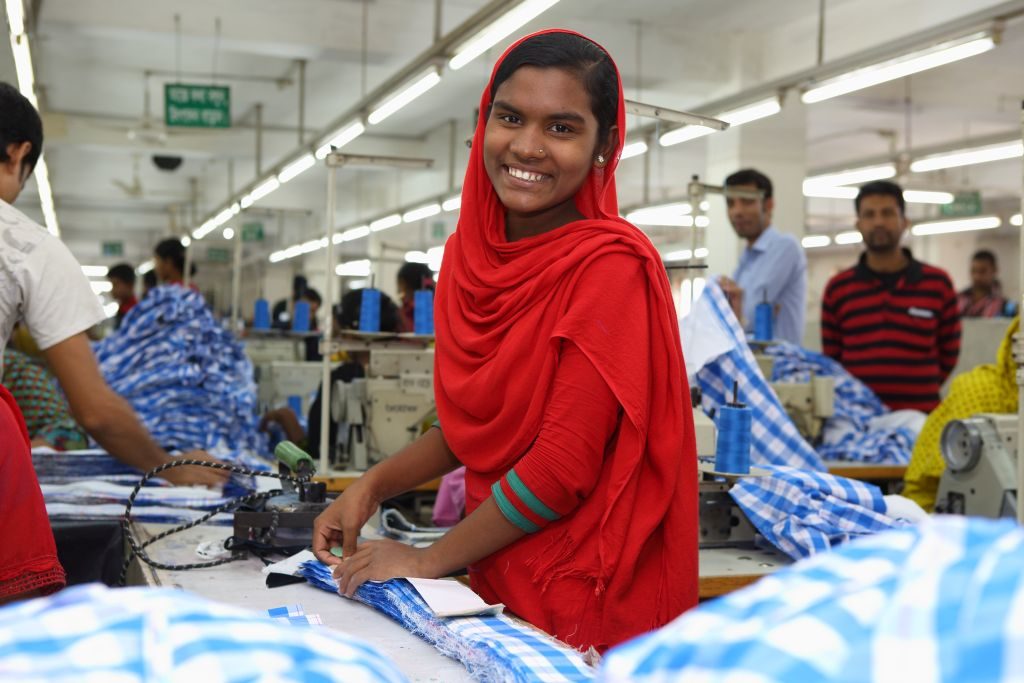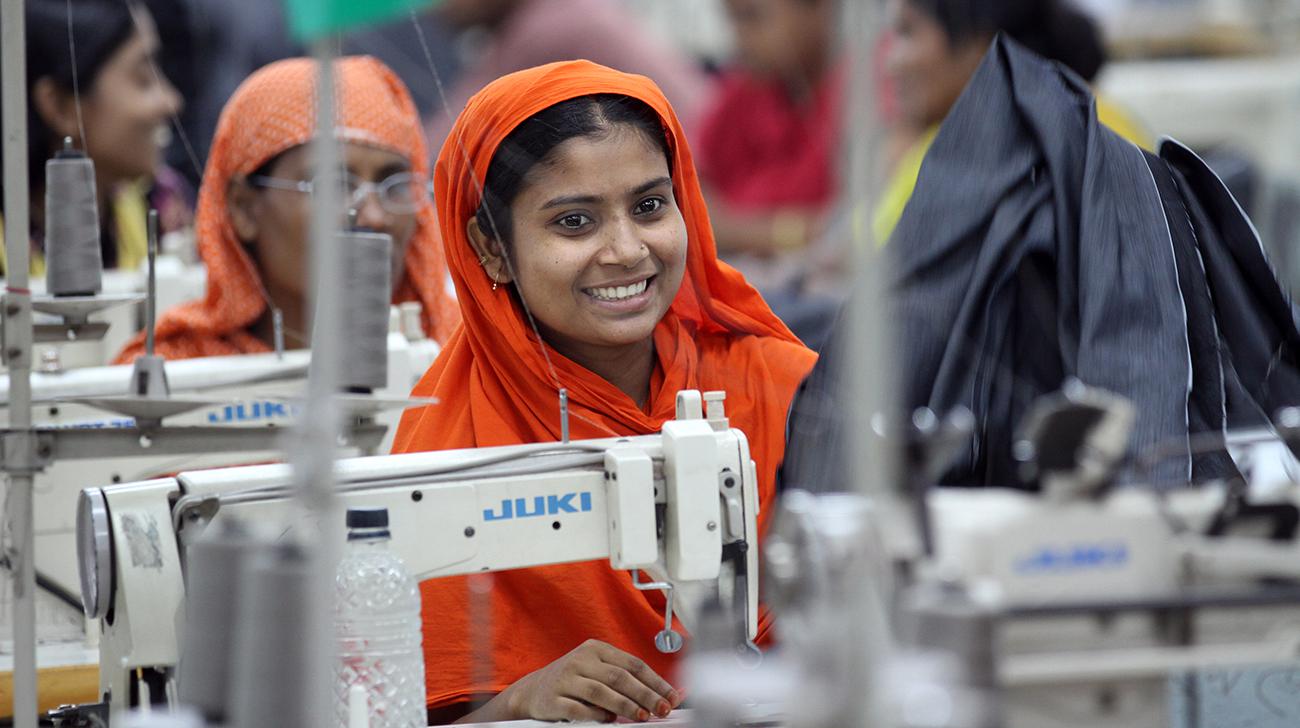Manufacturing is now an overwhelmingly salient component of Bangladesh’s export composition, thanks largely to the rapid expansion of the garment industry. From a small base of only around US$ 32 million in 1984, garment exports have grown to around US$ 25 billion by 2014, accounting for more than three-quarters of export earnings. The garment has been an important contributor to growth and employment generation in Bangladesh. Female participation in the formal labour market underwent a major shift with the rise of the garment industry in Bangladesh. It provides direct employment to over 4 million people, 70 percent of whom are female. More than 50 percent of the manufacturing labor force is now employed in this sector, and the sector accounts for 30 percent of the investment in manufacturing. Therefore, the story of the growth of the manufacturing sector in Bangladesh over the past two decades has been the story of the success of the garment sector.
There is no denying the fact that the success story of the garment industry in Bangladesh lies in its comparative advantage generating from the country’s large pool of unskilled labor. Considering the fact that Bangladesh’s Asian neighbors and competitors such as India, Pakistan, Sri Lanka, and China also have a large pool of unskilled labour, it is certainly astounding how Bangladesh has been able to retain its comparative advantage till date and has enjoyed continued export growth. While cheap labor has been the single most important advantage of Bangladesh, the local industry has flourished in spite of numerous challenges, e.g., high cost of doing business, weak infrastructure, weak governance, and labour unrests.
There have been concerns with regard to the compliance issues and workplace safety in the garment industry in Bangladesh, and in the last couple of years, these issues have become very critical for the future of this industry. There is strong international pressure, in the form of the threat of canceling large preferences in the markets of Western countries, if labour conditions are not improved. Quality competitiveness is getting increased priorities over price competitiveness, and of course, the quality of a product embodies the standard of living of labour being used in the production process. These concerns should be addressed in a positive way as an opportunity to build the industry’s reputation in the global market. This calls for, among many other things, to deal with labor issues in the garment industry carefully. In this context issues like wage, workplace security, fringe benefits, workplace environment, etc. need to be resolved on a priority basis. Current labor practices prevalent in the garment industry need to be improved in order to make the sector sustainable. Improvement of the labour condition is closely linked to the enhancement of the productivity of labour. There is equally a need to invest in training workers to move up to the higher value-added garment products. The BGMEA and the government should collaborate with each other, with help from relevant international agencies, to be able to work effectively in this area.

The garment industry of Bangladesh is now at a crossroad. It is now time to focus on how Bangladesh could retain its comparative advantage and continue its success story. Reliance on only the mass pool of unskilled labour doing things in the old way would be not sufficient. Careful examination of Bangladesh’s comparative advantage in the garment industry reveals the fact that the nature of this advantage is primarily static in nature. This suggests, retaining the static comparative advantage will be highly challenging in the future given the increased competition from other countries, growing stringent compliance issues, and the fact that to what extent the country will be able to enhance its competitiveness in doing business. Therefore the sector should aim for generating dynamic comparative advantage which would ensure the sustainability of this sector in the future. There is a critical need for enhancing labour productivity, moving up to the higher value-added products through introducing new technology along the production line spurring innovation, and enhancing Bangladesh’s competitiveness by reducing the cost of doing business.
It is also essential to keep in mind that comparative advantage doesn’t necessarily translate into a competitive advantage. Given an environment of the high cost of doing business, in order to maintain the competitive advantage, there is a tendency of putting downward pressure on workers’ wages and benefits. In this context, for the workers’ welfare, there is a critical need for reducing the cost of doing business in Bangladesh. The garment industry is constrained by a host of such costs. High lead-time is an important challenge for this industry. Inefficiencies at ports and related internal road transportation further aggravate the problem. Amongst others, lack of investment fund and working capital, high-interest rate, poor physical infrastructure, poor law and order situation, invisible costs of doing business, etc. are major impediments to export prospects. These factors will eventually determine the competitive advantage of Bangladesh’s garment industry and exports. Addressing these issues requires strategic planning and its adroit implementation.
The future of the garment industry will be critical for Bangladesh’s socio-economic development. Although the evidence on trade-growth and trade-poverty relationships as found in academic studies is still far from being conclusive, the growth of garment exports has been associated with the overall economic growth of the country accompanied by remarkable progress on poverty alleviation. Even without going deep into such hotly debated subjects as whether the export sector has been the ‘engine’ of growth and to what extent the growth has been equitable to reach the poorest groups, it can be said that the garment-led export growth process has established a direct link between trade and poverty in Bangladesh by creating massive employment opportunities. And the sustainability of this industry also depends on how carefully and properly the issues related to the welfare of the workers are addressed.



RECENT COMMENTS